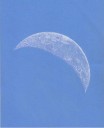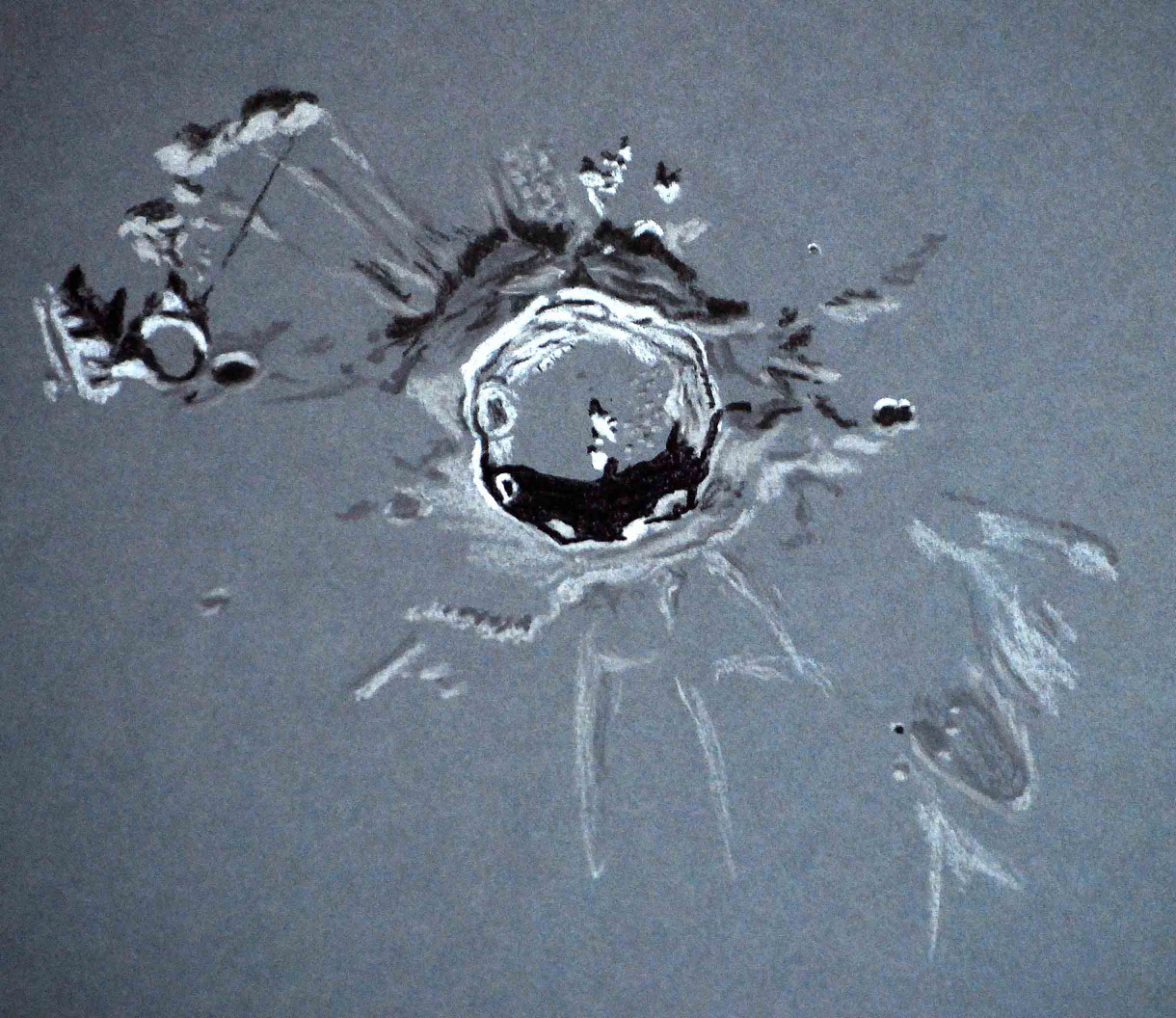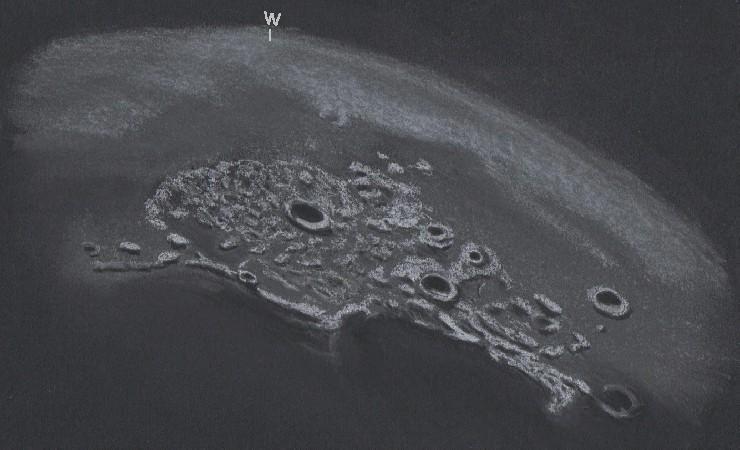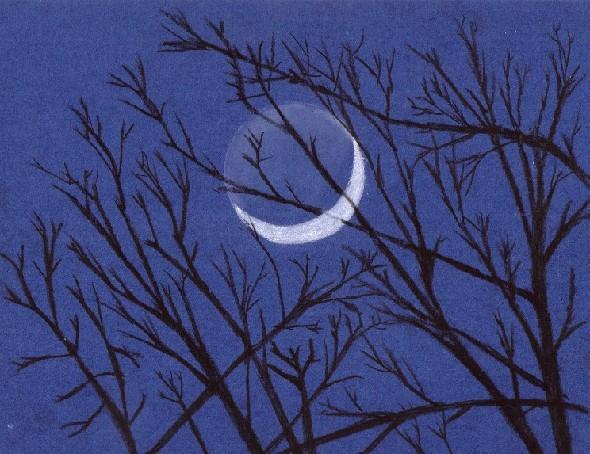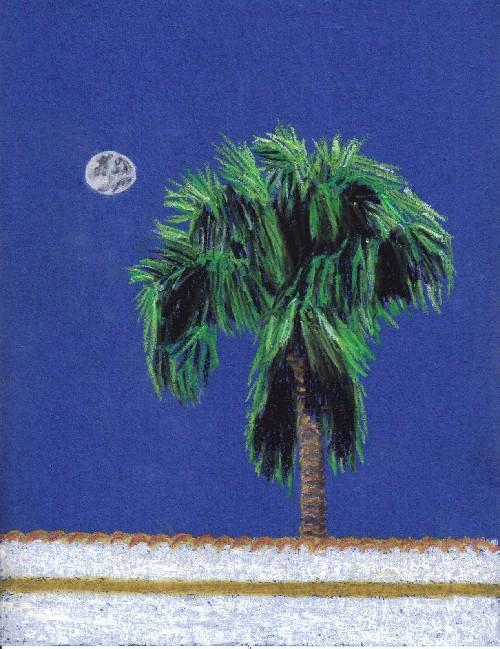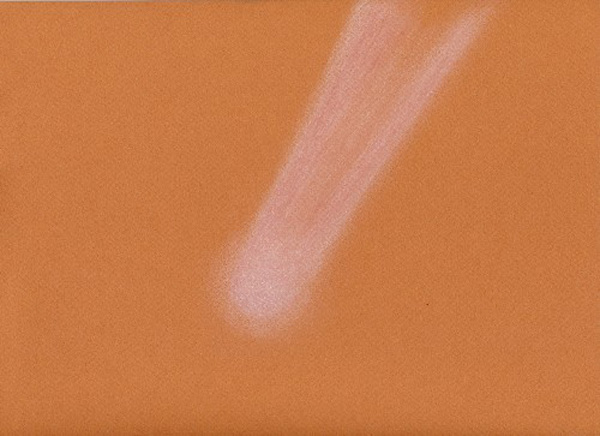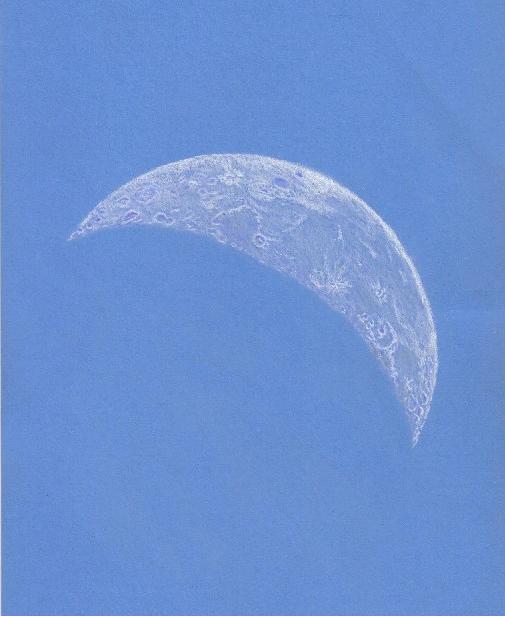
This morning was the first clear sky I have seen in 2 weeks. Although it did not clear-off until after morning twilight began, I’ll take what I can get and be happy I got a chance to sketch the Moon as it prepares to end this lunation and begin the next.
At 4:30 am CDT the waning crescent moon struggled to 30 degrees above the eastern horizon as I began sketch it. By the time I had finished the sun was up and morning was well underway.
Sketching:
For this sketch I used blue construction paper 9″ x 12″, white Conte’ pastel pencils, blending stumps, a White Pearl eraser, brush and blue Crayola colored pencils. Brightness was slightly increased (+1) using the scanner
Scope 4.25” f/5 Newtonian scope with a 12mm Plossl eyepiece at 46x riding on an equatorial platform
Date: 6-26-2011, 09:30-10:30 UT
Temperature: 18° C (65° F)
clear, calm
Seeing: Antoniadi III
Colongitude: 214.0°
Lunation: 24.52 days
Illumination: 23.8% Waning Crescent
Frank McCabe
